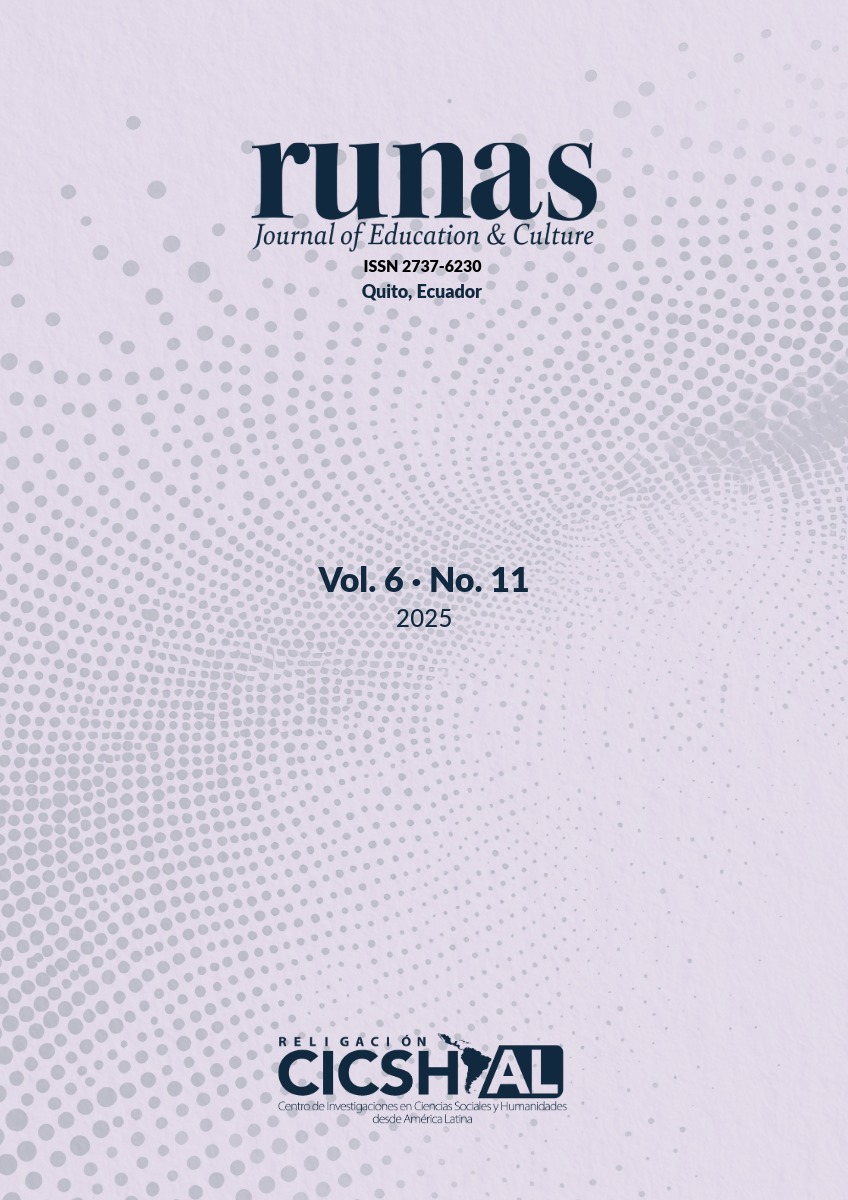Abstract
This research examines the impact of GeoGebra software on academic performance and motivation towards learning linear programming in third-year students of Unified General Baccalaureate of the Santa Rosa Educational Unit during the period 2022-2023. To this end, a bibliographic analysis is carried out around education, exploring various pedagogical currents with a special focus on constructivism. The relevance of teaching resources is explored, highlighting the role of Information and Communication Technologies, and in particular, of GeoGebra Software. For this research, a proposal for Didactic Sequences using GeoGebra is developed, aimed at teaching linear programming. The research uses a mixed methodology with a quasi-experimental design, integrating qualitative and quantitative methods to evaluate the impact of the proposal on the academic performance and motivation of students. A control group and an experimental group are used. The results show that the use of GeoGebra improves learning, as the experimental group obtained higher scores after the intervention, and the students perceived the classes as more dynamic and understood mathematical procedures better. This research contributes to the educational field, combining theory and practice to improve the quality of learning in a specific context of secondary education.
References
Arbain, N., & Shukor, N. A. (2015). The Effects of GeoGebra on Students Achievement. Procedia - Social And Behavioral Sciences, 172, 208-214. https://doi.org/10.1016/j.sbspro.2015.01.356
Arteaga, E., Medina, J., & Del Sol Martínez, J. (2019). El GeoGebra: una herramienta tecnológica para aprender matemática en la Secundaria Básica haciendo matemática. Revista Conrado, 15(70).
Auccahuallpa, R., Troya Vásquez, R., & Rodríguez, D. (2022). Beneficios del uso de GeoGebra en el proceso de enseñanza-aprendizaje de la Matemática. IV Congreso Internacional de la Universidad Nacional de Educación.
Bakar, K. A., Ayub, A. F. M., Luan, W. S., & Tarmizi, R. A. (2010). Exploring secondary school students’ motivation using technologies in teaching and learning mathematics. Procedia - Social And Behavioral Sciences, 2(2), 4650-4654. https://doi.org/10.1016/j.sbspro.2010.03.744
Bakar, K. A., Ayub, A. F. M., & Mahmud, R. (2015). Effects of GeoGebra towards students’ Mathematics performance. International Conference On Research And Education In Mathematics (ICREM7). https://doi.org/10.1109/icrem.2015.7357049
Bello, J. (2013). Mediación del Software GeoGebra en el Aprendizaje de Programación Lineal en alumnos del quinto grado de educación secundaria [Tesis de maestría, Pontificia Universidad Católica del Perú].
Fullana, J. (2018). La investigación sobre el éxito y el fracaso escolar desde la perspectiva del factors de riesgo. implicaciones para la investigación y la práctica educativa [Tesis doctoral, Universidad de Girona]. http://www.tdx.cat/TDX-0611108-092619
Gallego-Lopez, F. A., Granados-Lopez, H., & Sanchez-Sanchez, O. J. (2018). Influencia del GeoGebra en la motivación y autorregulación del aprendizaje del cálculo y álgebra en universitarios. Revista ESPACIOS, 39(17).
García Marimón, O. G., Diez-Palomar, J., Morales Maure, L. M., & Durán González, R. E. D. (2021). Evaluación de secuencias de aprendizaje de matemáticas usando la herramienta de los Criterios de Idoneidad Didáctica. Bolema Boletim de Educação Matemática, 35(70), 1047-1072. https://doi.org/10.1590/1980-4415v35n70a23
Jiménez, A. K. P., Soto, J. M. S., & Reyez, M. M. (2022). El efecto de la música sobre el aprendizaje en alumnos universitarios. Ciencia Latina Revista Científica Multidisciplinar, 6(4), 201-213. https://doi.org/10.37811/cl_rcm.v6i4.2541
Kapp, K. M. (2012). The Gamification of Learning and Instruction: Game-based Methods and Strategies for Training and Education. John Wiley & Sons.
López, D. M. (2020). Diseño e implementación de una secuencia didáctica para la enseñanza del concepto de elemento químico. Praxis & Saber, 11(27). https://doi.org/10.19053/22160159.v11.n27.2020.11116
Moreira, D., & Yanes, B. (2021). Análisis descriptivo de instrumentos para medir motivación académica. Una propuesta de aplicación en la Universidad de las Ciencias Informáticas. IV Conferencia Científica Internacional UCIENCIA 2021.
Moya, A. (2010). Recursos didácticos en la enseñanza. Revista Digital Innovación y Experiencias Educativas, 6(45).
Portilla, J. (2012). Uso de GeoGebra como recurso didáctico para la enseñanza de funciones gráficas en 1o de Bachillerato de Ciencias y Tecnología [Tesis de maestría, Universidad Internacional de La Rioja].
Taboada, M. B. (2021). Secuencias didácticas: 30 preguntas y respuestas. Editorial El Ateneo.
Tejada Fernández, J. (2022). Claves para la selección y diseño de estrategias metodológicas y secuencias didácticas en educación superior. Roteiro, 47. https://doi.org/10.18593/r.v47.30083

This work is licensed under a Creative Commons Attribution-NonCommercial-NoDerivatives 4.0 International License.
Copyright (c) 2025 Pamela Soledad Astudillo Aguilar, Marco Alejandro Rojas Rojas, Pablo Guillermo Choco Coronel, Johnny Fernando Castillo Berrezueta





